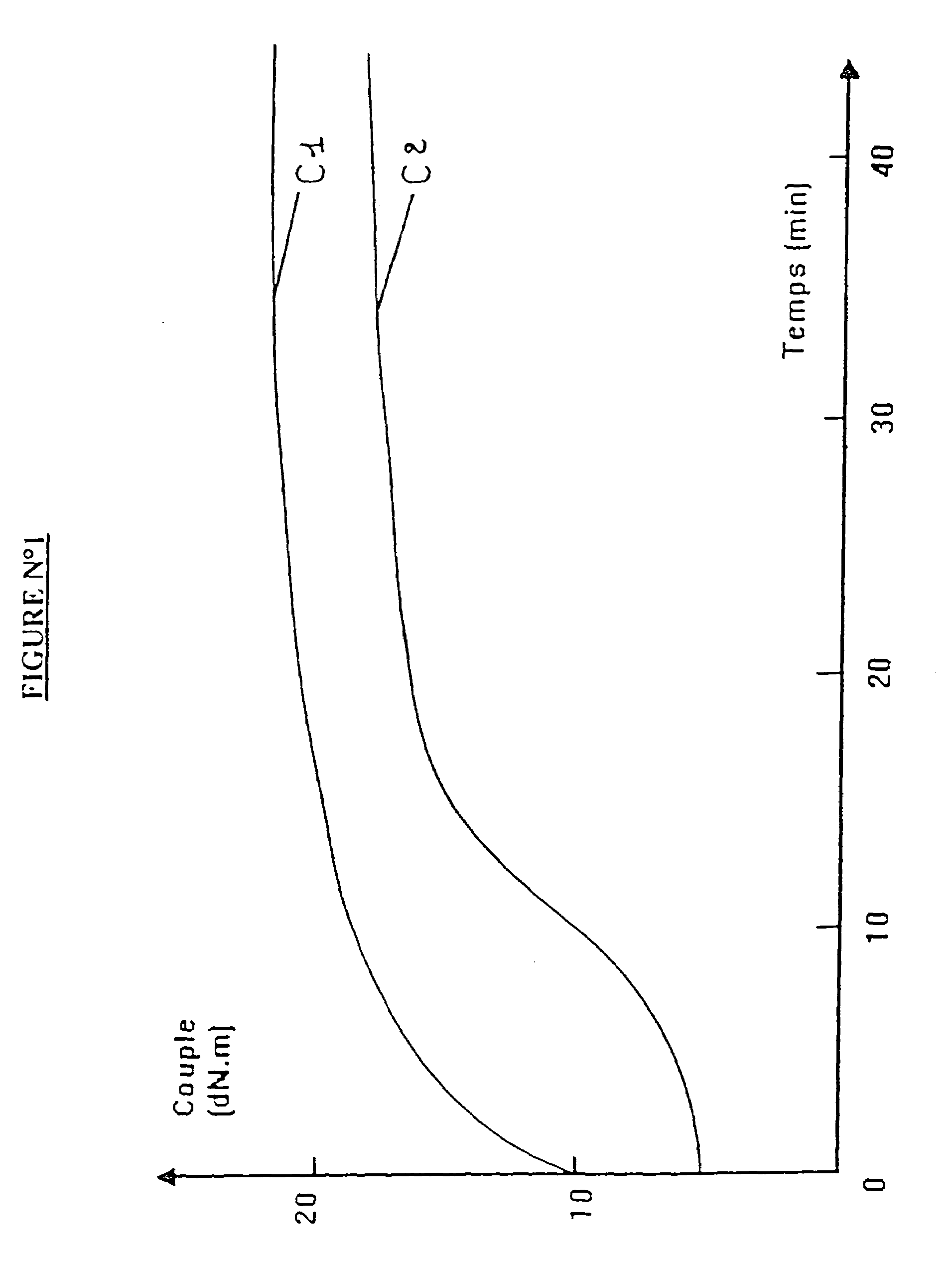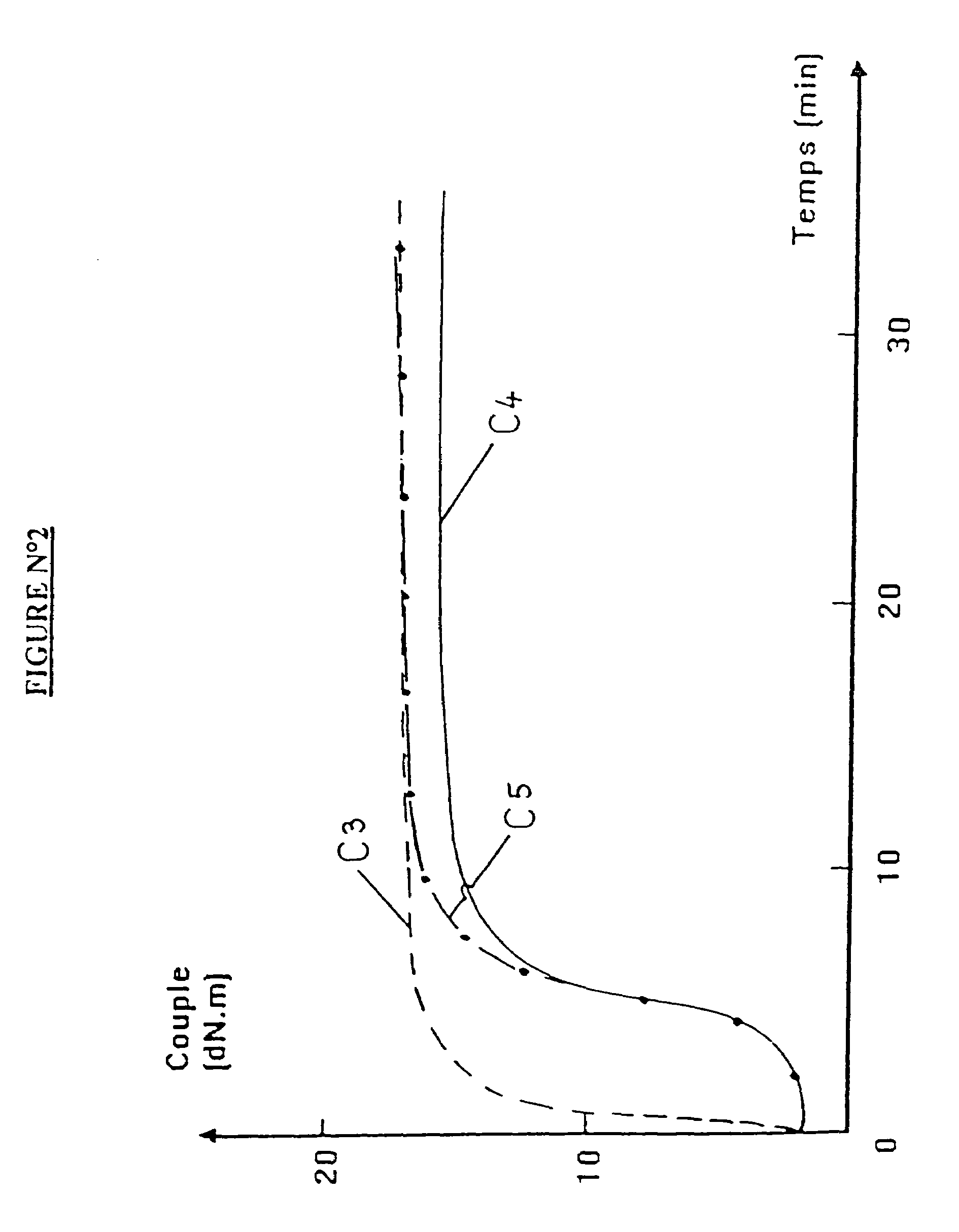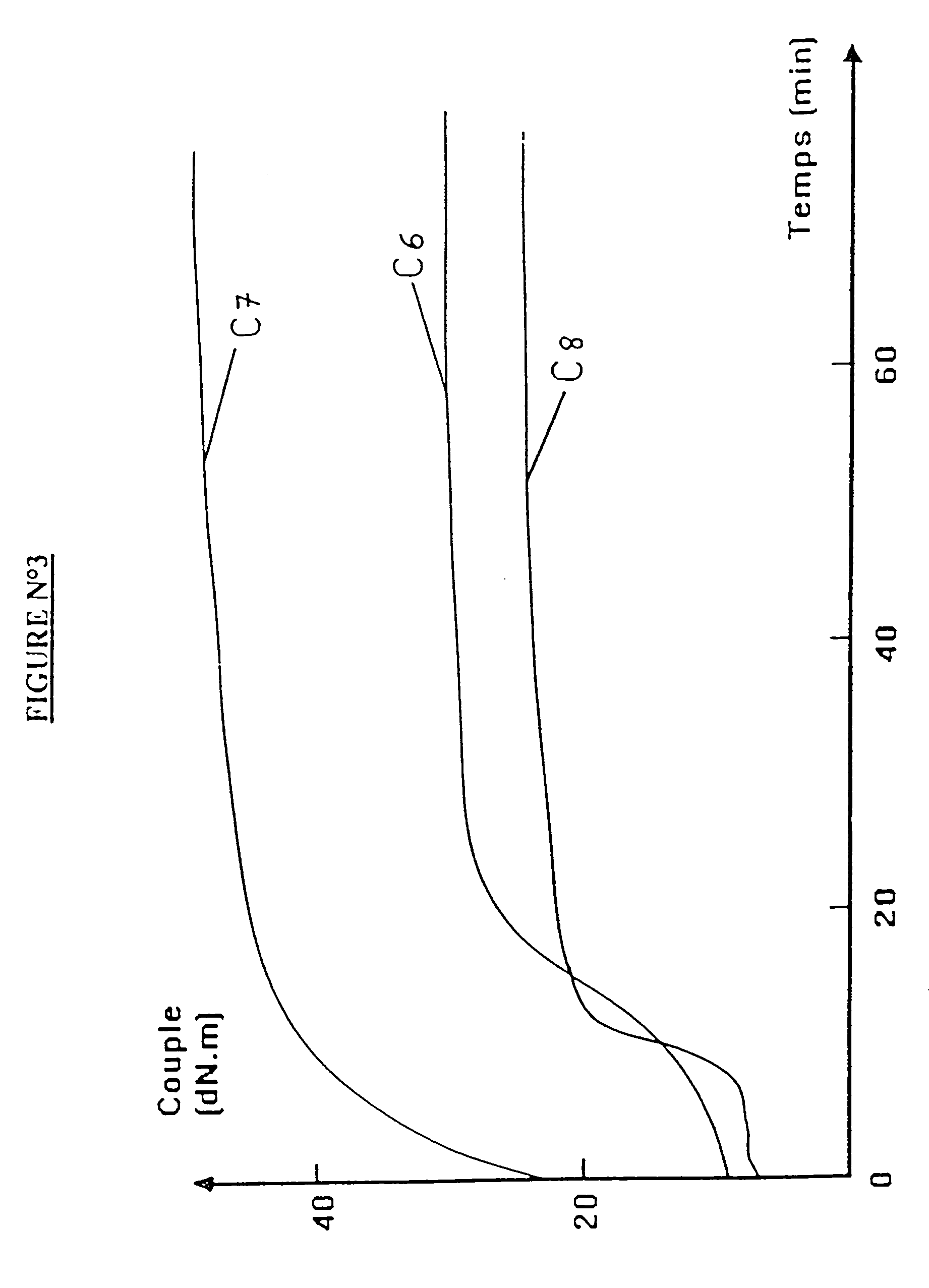Blocked mercaptosilane hydrolyzates as coupling agents for mineral-filled elastomer compositions
a technology of mercaptosilane hydrolyzate and mineral-filled elastomer composition, which is applied in the direction of non-skid devices, group 5/15 element organic compounds, transportation and packaging, etc., can solve the problems of less than optimal processing conditions, unacceptably high viscosity during processing, and premature curing, so as to reduce the loading level requirement and reduce the voc emission
- Summary
- Abstract
- Description
- Claims
- Application Information
AI Technical Summary
Benefits of technology
Problems solved by technology
Method used
Image
Examples
example 1
Homogeneous Preparation of a
Condensate of 3-acetylthio-1-propyltriethoxysilane
[0278]A crude starting material of 3-acetylthio-1-propyltriethoxysilane was first purified by flash vacuum distillation from sodium ethoxide. The distillate was redistilled. An initial forecut of volatiles was discarded and the bulk of the distillate was retained as a clear and colorless liquid, which was used as the starting material for the preparation of the condensate. To a homogeneous mixture of 3-acetylthio-1-propyltriethoxysilane (74.35 grams, 0.2525 mole) and anhydrous ethanol (70 grams) was added a modest quantity of water (2.27 grams, 0.126 mole), with stirring. The mixture was allowed to stand at ambient temperature for six weeks. After this time, volatiles were removed by rotary evaporation.
example 2
Heterogeneous Preparation of a
Condensate of 3-acetylthio-1-propyltriethoxysilane
[0279]A crude starting material of 3-acetylthio-1-propyltriethoxysilane was first purified by flash vacuum distillation from sodium ethoxide. The distillate was redistilled. An initial forecut of volatiles was discarded and the bulk of the distillate was retained as a clear and colorless liquid, which was used as the starting material for the preparation of the condensate. A two-phase mixture of 3-acetylthio-1-propyltriethoxysilane (68.3 grams, 0.232 mole) and water (49 grams, 2.7 moles) was stirred for six weeks at ambient temperature. After this time, the liquid layers were separated in a separatory funnel. Volatiles were removed by rotary evaporation from the organic phase.
example 3
Homogeneous Preparation of a Condensate of [8-octanoylthio-1-propyltriethoxysilane]3-triethoxysilyl-1-propyl thiooctoate
[0280]A quantity of [8-octanoylthio-1-propyltriethoxysilane]3-triethoxysilyl-1-propyl thiooctoate (240 grams, 0.66 mole) was added to a homogeneous mixture of anhydrous ethanol (54 grams) and water (5.93 grams, 0.329 mole) with stirring. The mixture was allowed to stand at ambient temperature for six weeks. After this time, volatiles were removed by rotary evaporation. The product was further purified by flash vacuum distilling out a forecut and retaining the nonvolatile portion of the sample. The forecut contained most of the ethyl octoate, 3-mercapto-1-propyltriethoxysilane, and 3-chloro-1-propyltriethoxysilane impurities present in the sample, as established by comparative GC (gas chromatography) with pure samples of the respective contaminants. GC analytical results (area %): Si—O-—Si siloxane “dimer” of [8-octanoylthio-1-propyltriethoxysilane]3-triethoxysilyl-...
PUM
| Property | Measurement | Unit |
|---|---|---|
| boiling temperatures | aaaaa | aaaaa |
| boiling temperatures | aaaaa | aaaaa |
| boiling temperatures | aaaaa | aaaaa |
Abstract
Description
Claims
Application Information
 Login to View More
Login to View More - R&D
- Intellectual Property
- Life Sciences
- Materials
- Tech Scout
- Unparalleled Data Quality
- Higher Quality Content
- 60% Fewer Hallucinations
Browse by: Latest US Patents, China's latest patents, Technical Efficacy Thesaurus, Application Domain, Technology Topic, Popular Technical Reports.
© 2025 PatSnap. All rights reserved.Legal|Privacy policy|Modern Slavery Act Transparency Statement|Sitemap|About US| Contact US: help@patsnap.com



